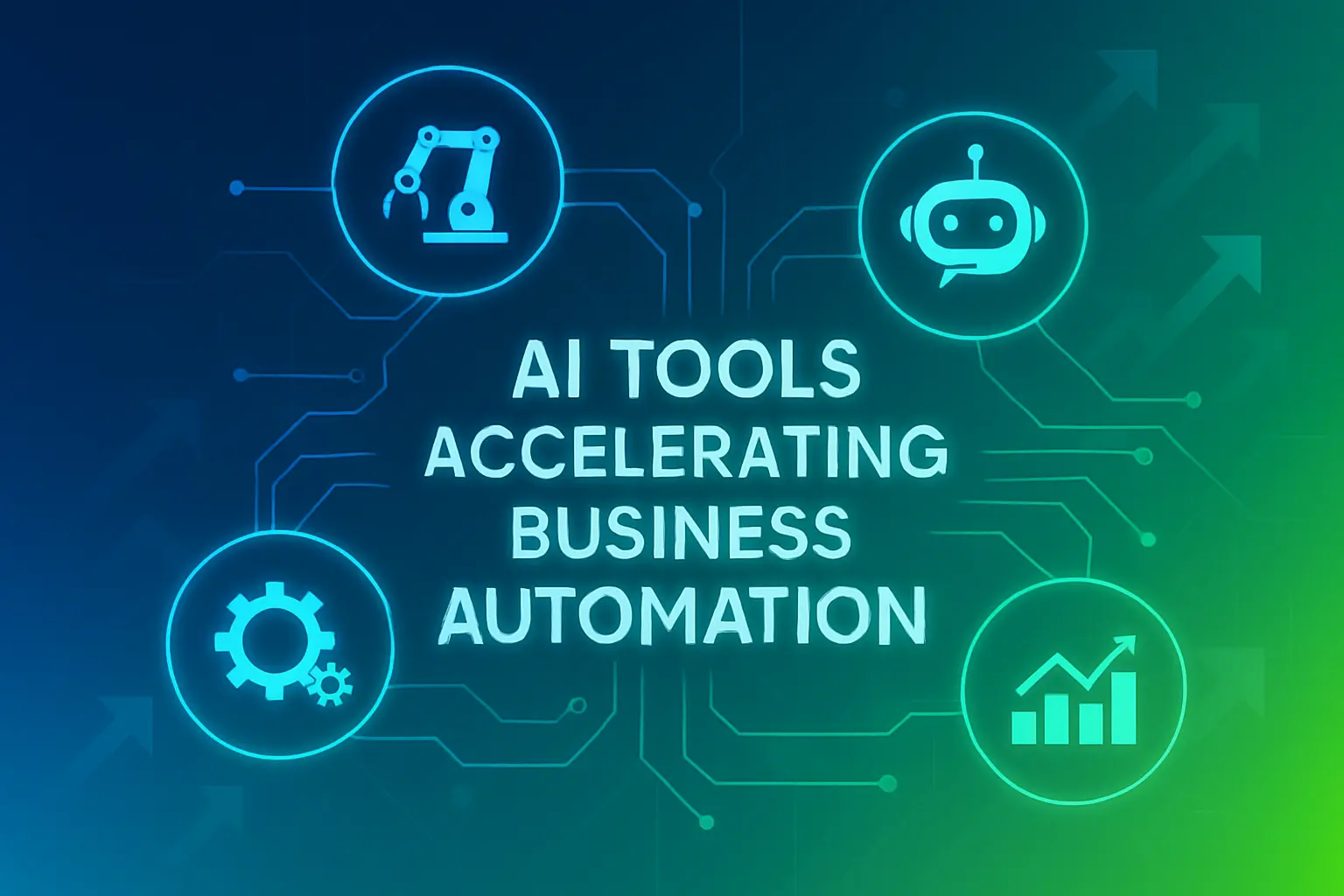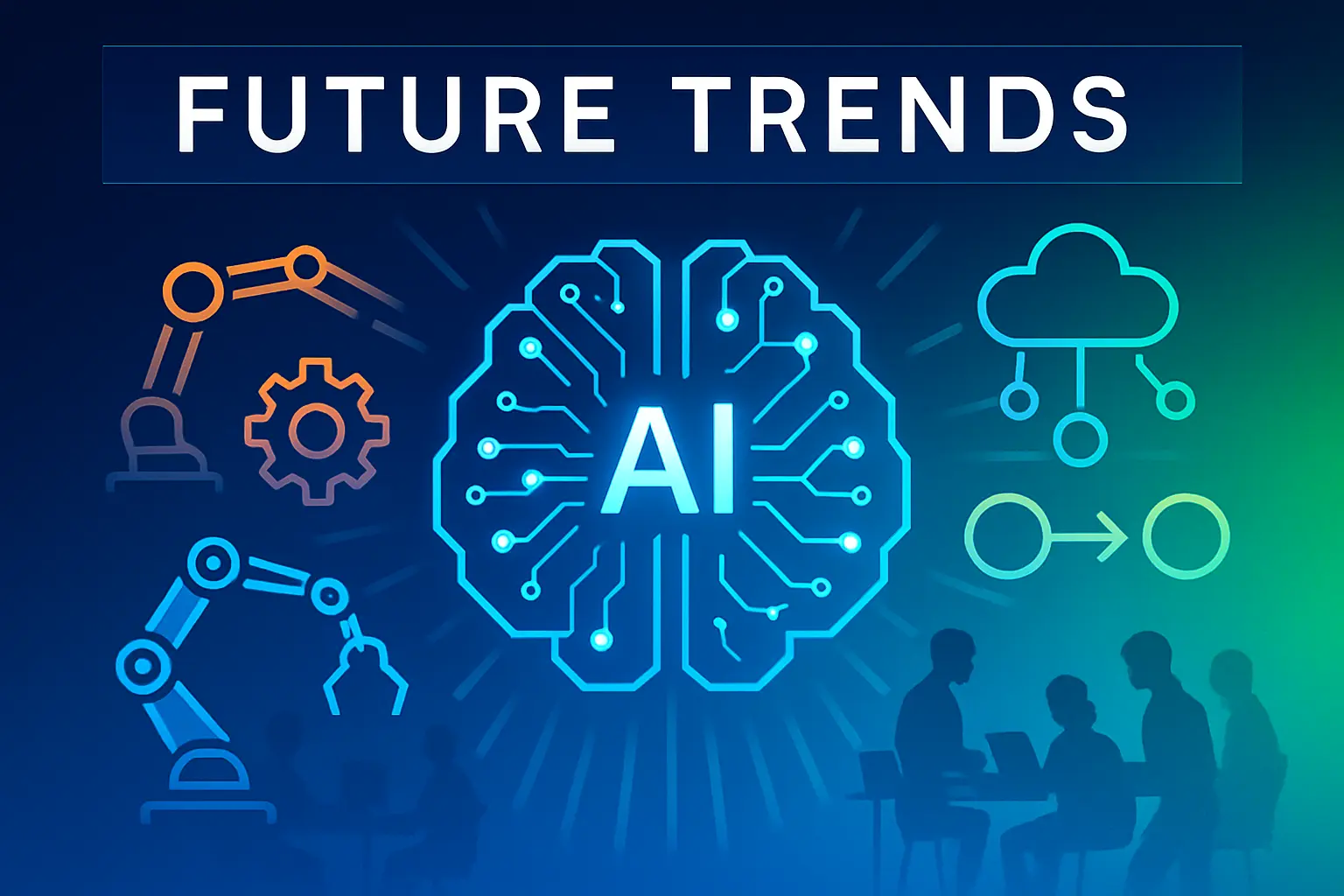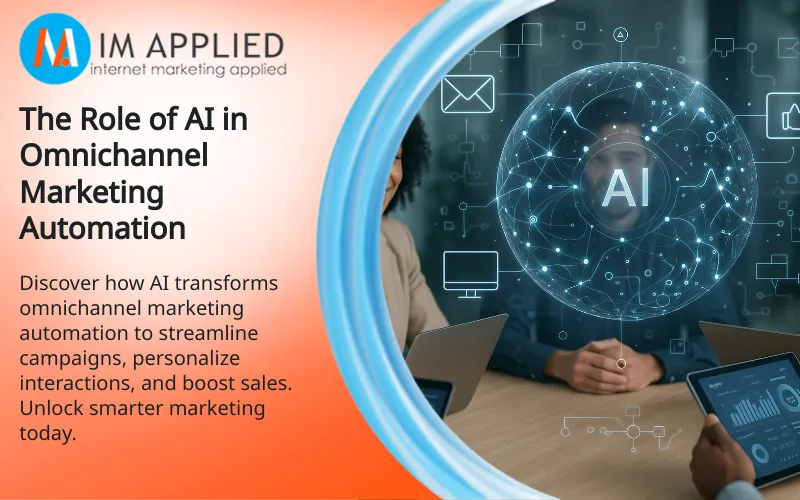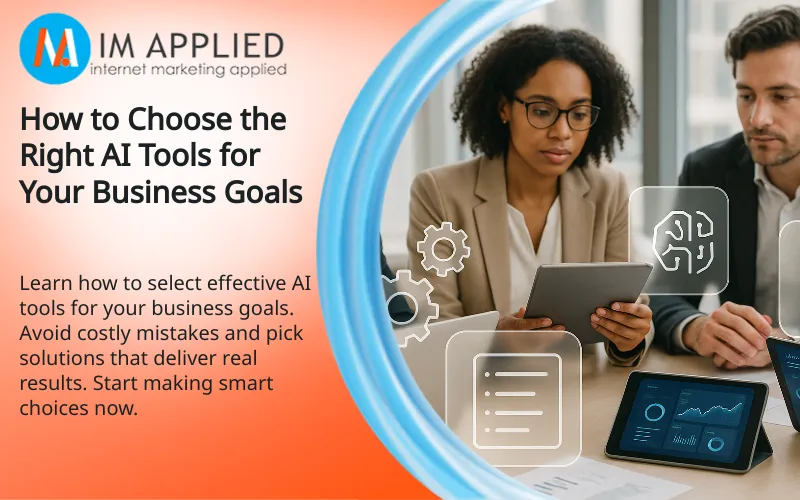Beginner’s Guide: Getting Started with AI Automation for Your Business
Karl Marais | 30 May 2025
Want to supercharge your business? You’ve probably heard the AI automation buzz everywhere, but knowing where to start can be overwhelming.
Here’s the good news: AI automation isn’t some distant dream.
It’s a practical, right-now solution that can make your business dramatically more efficient, more profitable, and far less stressful. Let’s explore exactly how.
Introduction to AI Automation
AI automation is changing how businesses operate by streamlining and optimizing everyday tasks.
By integrating AI, companies can automate tedious work, freeing employees to focus on more valuable activities.
These tools leverage machine learning and business intelligence, driving innovation and growth for businesses of all sizes.
More leaders now see AI automation as essential to maintaining a competitive edge.
Understanding the Basics of AI and Automation
At its heart, AI automation uses smart algorithms and models to mimic decision-making.
Techniques like machine learning and deep learning allow systems to learn from historical data and predict outcomes.
Natural language processing enables smoother human-AI interactions, and AI-powered workflows replace repetitive, manual processes, boosting both accuracy and efficiency.
Understanding how AI automation works helps businesses align its use with their strategic goals.
Key Benefits for Businesses
AI automation delivers clear, practical benefits:
- Efficiency Boost: Automate time-consuming tasks for faster operations and lower costs.
- Scalability: Easily handle growing workloads without growing your team proportionally.
- Smarter Decisions: AI analyzes large datasets quickly, surfacing valuable insights for better decision-making.
- Improved Customer Experience: AI offers personalized and instant support.
- Competitive Edge: Automation enables innovative offerings that help you stand out.
Common Myths Debunked
Widespread misconceptions about AI automation may hinder its successful adoption across industries.
For example, it’s often believed that AI replaces jobs; in reality, it augments human work, removing the most repetitive tasks and freeing teams for creative and complex challenges.
Another myth is that AI is too complex or costly, but today’s platforms are increasingly user-friendly and accessible.
Implementation is also less daunting than many suppose, with many tools offering easy integration and strong support.
Addressing these misconceptions helps businesses innovate and grow with confidence.
Evaluating Your Business for AI Automation
Before jumping in, it’s vital to assess your business’s readiness for AI.
Start with an AI Automation Assessment: identify workflows ripe for automation, such as repetitive, manual, or data-heavy tasks.
A thorough Process Analysis highlights where AI can deliver the most value.
Effective Business Evaluation for AI examines your current processes and spots automation opportunities—think customer support, large data management, or reporting tasks.
Once identified, design an AI Implementation Strategy tailored to your systems and business goals.
Success also depends on being mentally prepared, shifting from traditional operations to AI-powered workflows with a strategic mindset.
Identifying Core Processes for Automation
Not every process suits automation.
Focus on processes to automate with AI that are repetitive, manual, or time-consuming—for instance, data entry or routine customer support.
Departments like marketing and finance, often weighed down by manual tasks, can benefit greatly.
Pinpointing these opportunities means improved efficiency and job satisfaction, allowing staff to focus on more meaningful work.
Setting Clear Objectives and Goals
Clear AI Automation Goals are crucial. Define what success looks like—whether it’s cost reduction, improved efficiency, or higher customer satisfaction.
Set measurable KPIs, such as reduced response times or fewer errors, to track progress and prove ROI.
Align these objectives with your business’s larger vision to ensure AI supports strategic growth.
Overcoming Initial Resistance
Every new technology sparks some resistance.
Smooth the transition by communicating benefits clearly, providing employee training, and openly addressing AI Ethics and privacy questions.
Use workshops and discussions to highlight how AI can make jobs more interesting, not just more efficient.
Embedding AI in your company culture encourages acceptance and sets the stage for successful adoption.
AI Tools and Technologies for Business Automation
AI automation isn’t just trendy—it’s becoming necessary for growth and efficiency.
Today’s AI Automation Tools can handle repetitive tasks, speed up workflows, and even analyze data for smarter decisions.
From machine learning platforms for predictive analytics to Robotic Process Automation (RPA) for routine business tasks, there’s a solution for almost every need.
Advancements in deep learning and NLP make AI tools accessible, even for smaller businesses.
AI agents can manage customer queries, and RPA can streamline finance tasks.
Start by assessing which platforms fit your business needs and are easy to integrate.
Popular AI Software and Platforms
Some leading AI Automation Software options include:
- Microsoft Power Automate: Seamlessly connects apps and automates workflows.
- UiPath: Simplifies even complex tasks for enterprises.
- Automation Anywhere: Offers scalable process automation.
- Google Cloud AI and Microsoft Azure AI: Ideal for customizable, cloud-based AI solutions.
- Amazon Rekognition: Adds image and video analysis to your toolkit.
- API4AI: Makes sophisticated AI accessible to smaller businesses.
Match specific needs to a platform’s strengths to get the most value.
Off-the-Shelf vs. Custom Solutions
Choosing between custom-built and pre-built AI means weighing flexibility against speed and cost.
Off-the-shelf tools enable rapid deployment and lower risk.
Custom solutions offer tailored functionality and superior integration, but need a larger investment and more technical expertise.
Consider your project’s scope, timeline, and available resources before deciding.
Creating and Implementing an AI Workflow
Building an effective AI workflow involves several clear steps:
- Data Preparation: Cleanse and format data to ensure quality.
- Model Training: Use data to “teach” AI systems, refining continuously for accuracy.
- Integration: Align AI with your processes for seamless adoption.
- Monitoring: Track performance and tweak based on results and feedback.
To ease your way in, consider starting with a small pilot project that tests AI in a controlled environment and measures impact.
Data Collection and Preparation Steps
Gather comprehensive, relevant data from trustworthy sources. Clean the data to remove errors and inconsistencies, and format it for AI systems.
Regularly check data quality to ensure your models stay effective.
Monitoring and Optimization Techniques
After deployment, monitor key performance metrics. Gather user feedback, retrain models as needed, and use A/B testing to refine workflows.
Continuous improvement keeps your AI solutions aligned with evolving needs and opportunities.
Challenges and Considerations
Despite its benefits, AI automation does present some challenges:
- Integration complexity: Upgrading infrastructure and managing change can be significant undertakings.
- Data Quality: Incomplete or biased data can hurt results. Ongoing data management is critical.
- Workforce Skills: Training or hiring talent versed in AI may be necessary.
- Regulatory Compliance and Ethics: Stay current with privacy laws (like GDPR) and maintain ethical standards.
- Security: Protect sensitive data with robust safeguards.
Addressing these factors early helps maximize AI’s benefits while minimizing potential disruptions or risks.
Measuring and Interpreting Success
Evaluate your AI initiatives with clear metrics and KPIs tailored to your goals, such as efficiency gains, cost reduction, or customer satisfaction improvements.
Use performance dashboards for real-time insights and make adjustments as necessary.
Continuous feedback and periodic model retraining help ensure your AI remains productive as conditions change.
Glancing at other business units for scalable success can further multiply the impact.
Future Trends in AI Automation
AI’s future is brimming with exciting advancements.
Generative AI is automating content creation and personalizing customer experiences, while autonomous systems are revolutionizing logistics with smarter vehicles and drones.
Technologies like quantum computing and Edge AI promise new levels of speed and local intelligence.
Explainable AI (XAI) offers transparency, especially crucial in areas like healthcare.
The next decade will bring deeper AI integration, more human-AI collaboration, and reimagined business models.
Staying nimble and building AI competency ensures your business remains a front-runner, not just an observer.
Conclusion
AI automation is more than a buzzword—it’s a transformative asset for any business focused on efficiency and results.
By assessing your needs, setting clear goals, and taking a thoughtful approach, your organization can capture the AI advantage.
Ready to take the next step? Outline your AI Implementation Plan and explore the vast resources designed to help your team succeed.
Whether through off-the-shelf or custom solutions, ongoing learning, or strategic advice, AI’s benefits are extremely real and within reach.
Start your journey, and shape your business’s future today. For further integration tips, see how AI can revolutionize your marketing strategies.




